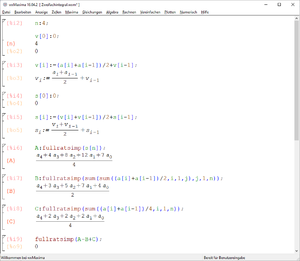Ermittlung der mittleren Vollverzögerung von zweispurigen Straßenfahrzeugen
2001, pp. 57 – 64 (#2)
ECE Regulation No. 13 and 71/320/EEC determine the minimum legal braking performance for new road vehicles at the time of type approval. The braking performance is specified in terms of stopping distance and in terms of mean fully developed deceleration (mfdd). However up to now no calculation method existed how to determine mfdd so that it will be in correlation with the stopping distance. For the first time in 98/12/EC and in the newest revision of ECE R 13 a calculation method was introduced. This method is presented in this contribution. The updated regulations concede explicitly alternative methods of measuring mfdd, too. They are explained and judged with the aid of vehicle tests. Additionally, physical fundamentals and the connection between stopping distance and mfdd are described.
In the contribution is shown that in addition to the exact solution for mfdd, certain approximations are also permissible within the required accuracy, as documented by the outdoor measurement with the vehicle.
The methods for calculating the mfdd are based on the work done by the authors in ISO/TC2, SC2 Working Groups 6 and 10.
(Deutsche Zusammenfassung nicht vorhanden)
Zitat
Pflug, H.-C.; Voßkötter, G.: Ermittlung der mittleren Vollverzögerung von zweispurigen Straßenfahrzeugen. Verkehrsunfall und Fahrzeugtechnik 39 (2001), pp. 57 – 64 (#2)
Inhaltsangabe
Die deutsche 1:1-Übersetzung der ISO TR 13487, welche die Autoren offenbar maßgeblich verfasst haben. Der Beitrag wurde bereits 1996 weitgehend gleichlautend in der ATZ veröffentlicht.
Erratum
Das Zweifachintegral
[math]\displaystyle{ \int_{t_b}^{t_e} \int_{t_b}^t a(\tau)d\tau dt }[/math]
wird numerisch durch zweichfache Anwendung der Trapezregel berechnet
[math]\displaystyle{ \sum_i \sum_j^i \frac {a_{j-1} + a_j}2 T^2 + \sum_i \frac {a_{i-1} + a_i} 4 T^2 }[/math]
wobei die beiden Summen (im Gegensatz zur früheren Publikationen, etwa in der ATZ) jetzt daselbe Vorzeichen haben. Wenn man genau hinschaut, meint man in Gl. (13) der Veröffentlichung noch den ausradierten senkrechten Strich des Pluszeichens vor dem letzten Term zu erkennen:
Diese Korrektur (die auch in aktuelle Versionen der ISO TR 13487 eingeflossen ist) ist jedoch falsch; die Terme müssen unterschiedliches Vorzeichen haben, wie die nebenstehende Herleitung mit dem Computeralgebrasystem Maxima zeigt.
Weitere Beiträge zum Thema im VuF
Weitere Infos zum Thema
- Pflug, H.-C.; Voßkötter, G.: Bestimmung der mittleren Vollverzögerung von Kraftfahrzeugen. ATZ Automobiltechnische Zeitschrift 98 (1996), #1, pp. 56 - 63
- ISO TR 13487
- 71/320/EWG
- ECE-R 13
- 98/12/EG

